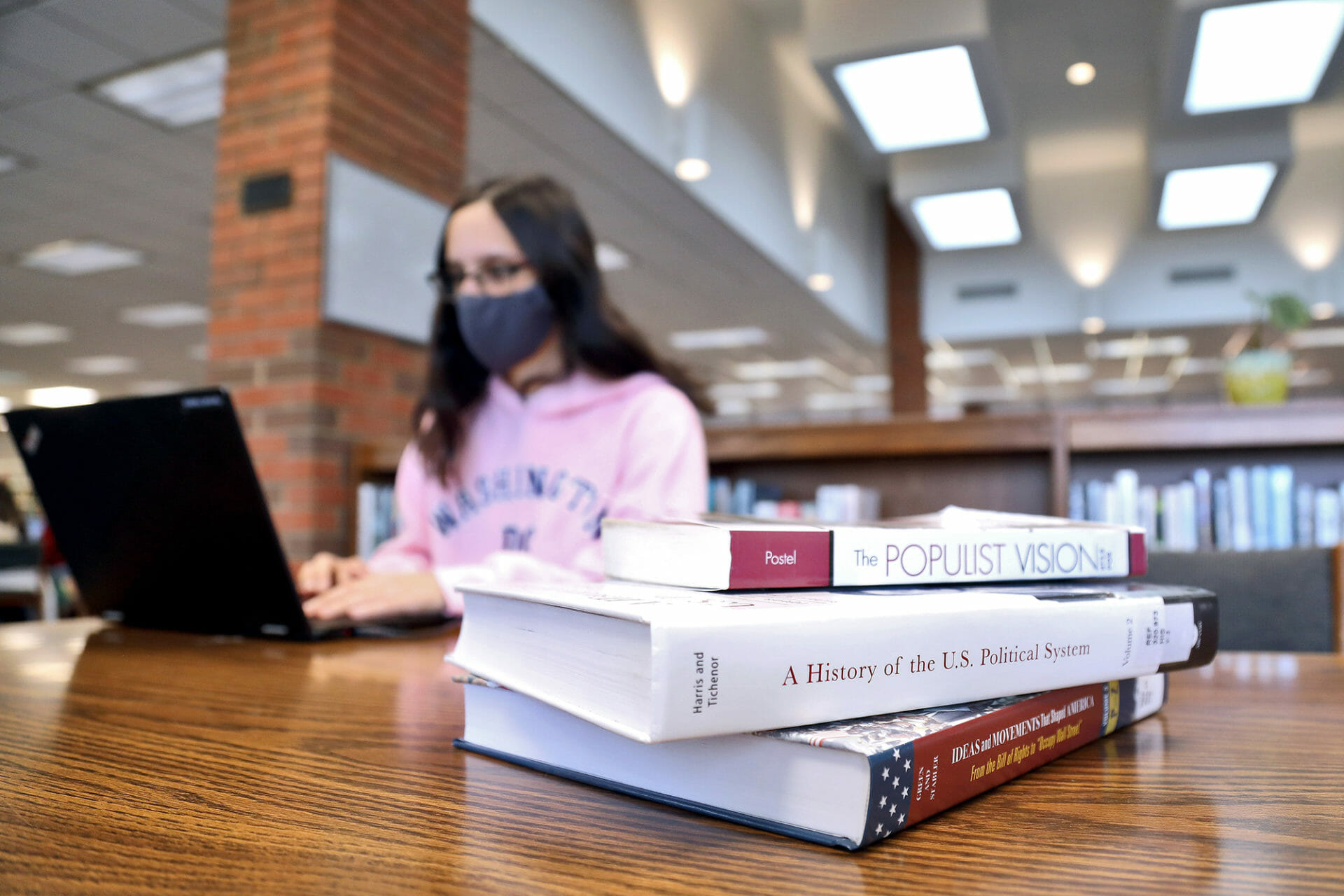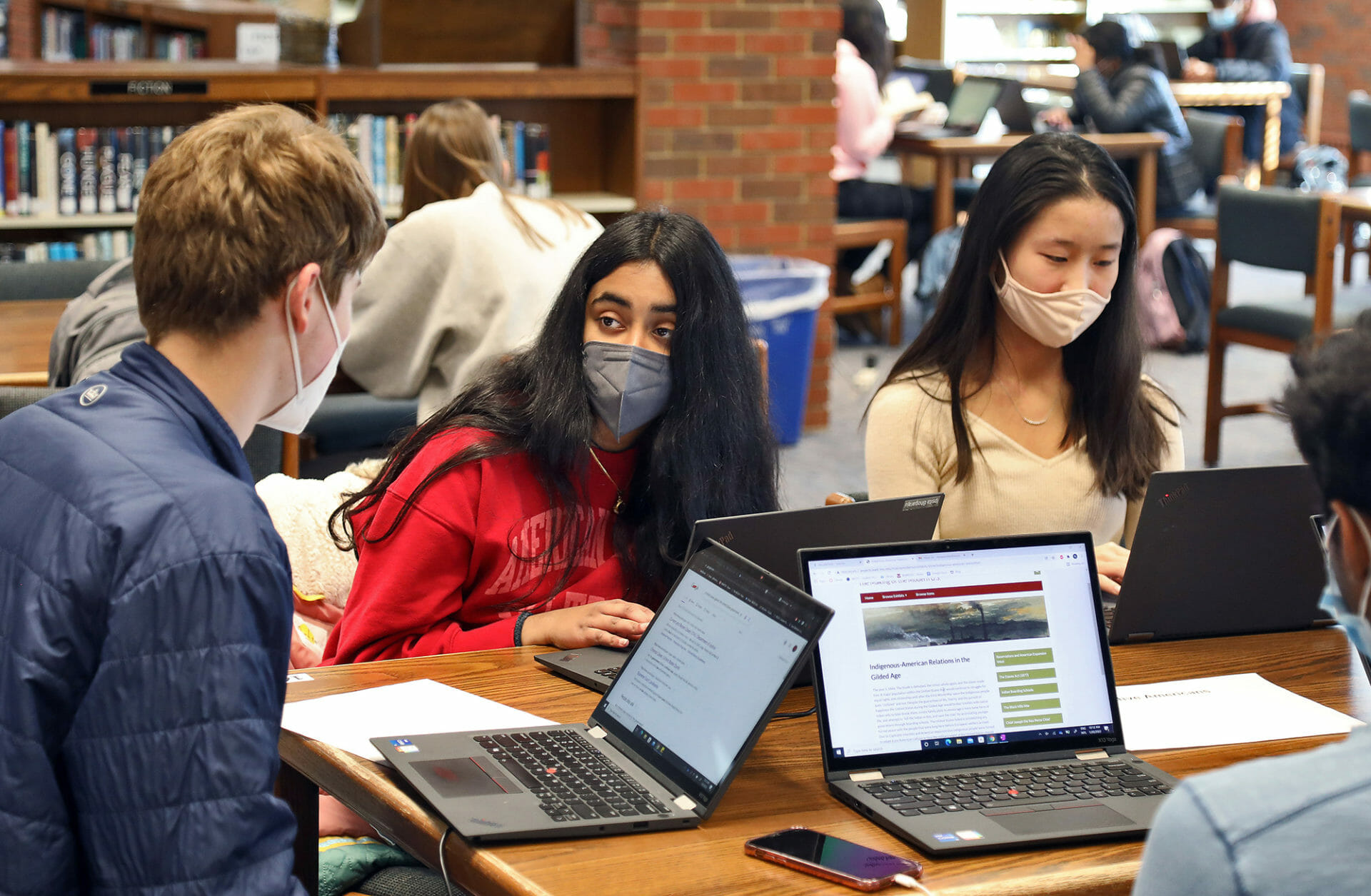Our 10th-grade advanced history students are tackling a new project to answer the question: How did the United States change during the last part of the 1800s, also known as the Gilded Age? The years 1865 to 1898 were a period of immense change in the United States, and change can sometimes be good, bad, or shocking. For this project, students contemplated what change meant. Like historians, they conducted research to learn about the past and develop arguments about what happened.
History Teacher Dr. Tanya Roth challenged her students to become detectives. “Channel your inner Hercule Poirot, Nancy Drew, or Hardy Boys,” she said. “Start with one lead, see where it takes you; pick up the trail of another lead, and follow all the clues. That’s what historians do.”
It starts with a name
While students were not writing a biography, they identified a person to serve as a touchstone for the period. Research led to a deeper understanding of that person and the group of Americans they represent. Historians also study this group’s experience of the late 19th century and its effect on the United States. A series of questions helped students frame their research:
- How did people living in the United States experience/respond to this period of the nation’s rebirth?
- How was your historical figure received in the time in which they lived/what was their legacy?
- How did your historical figure seize upon the moment to effect change? OR was the change happenstance?
- Was this group better off/worse off than at the beginning of this period?
And leads to the library
One of a historian’s favorite spots is the library, and so our intrepid investigators spent several days in the Upper School library, finding and reading sources. They were encouraged to spend quality time with their sources, even rereading them if necessary. “Make reading your superpower,” Roth said. They logged their sources and annotated books. The students met one-on-one with Dr. Roth and Upper School Librarian Colleen Williamson and participated in small group conversations to share their research findings and to support each other as they look for information. These research interviews and conversations helped students begin to talk about their research process.
Students looked at this era through the eyes of Native Americans, African Americans, Farmers, Urban Workers and Immigrants, or Big Business/Industry. They focused on people such as Sitting Bull, Geronimo, Ida B. Wells, Booker T. Washington, William Jennings Bryan, Mary Elizabeth Lease, Samuel Gompers, Eugene Debs, and Emma Lazarus. They also checked out the Dawes Act, the Homestead Act, Jim Crow, Plessy v. Ferguson, literacy tests, the Populist Party, the Grange, The Bland Allison Act, Munn v. IL, The American Federation of Labor, the Pullman Strike, Haymarket Square, Ellis Island, Standard Oil, vertical trusts, U.S. Steel, robber barons, and more.
Students spent several days finding sources and learning about their topic and will begin to craft their papers over the next few days. They’ll go through peer review and edits before turning in the final project on February 1.
“Take ownership of your actions,” Dr. Roth instructed her students. “This is a chance to challenge yourself and see what you’re capable of.” With such great guidance and a wealth of resources available in our Upper School library, we’re sure that our 10th-grade historians will have a thorough understanding of just how the United States changed in the latter part of the 1800s.












